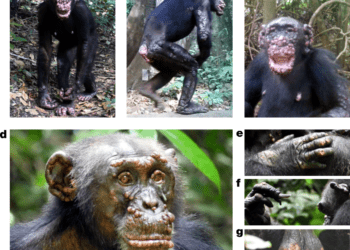Cases of leprosy, a chronic infectious disease, have increased in Florida and the southern US over the last decade, according to a new study. The Centers for Disease Control and Prevention (CDC) found that reported cases in the southeast doubled over the last 10 years, with a total of 159 cases registered in 2020 – and Florida accounting for one-fifth of all of these.

Leprosy, officially called Hansen’s disease, is a bacterial infection that targets the nerves and can cause swelling under the skin. It can spread from person to person but it’s not clear exactly how. Scientists think that the bacteria get transmitted via droplets from an infected person. Contact with armadillos, naturally infected with the bacteria, can also be a way people can get sick.
The new study, published in the journal Emerging Infectious Diseases, describes the case of a 54-year-old man who was diagnosed with leprosy but had no known risk factors and didn’t travel outside the state of Florida. Other people were also infected without an obvious explanation. This suggests that the disease could now be endemic in Florida, the authors said.
Still, there’s no need to panic. In the US, the number of leprosy infections plunged after peaking in 1983 and then started to rise again about 20 years ago. The number of cases every year is around 200. Even if it’s detected, the disease can be treated with a combination of antibiotics. Treatment usually takes one to two years.
“It’s a drop in the bucket, especially when you view it through a global lens,” Dr. Charles Dunn, a dermatologist from Kansas City University and one of the authors of the new study from the CDC, told The New York Times. “Our paper simply highlights that there appears to be this really intriguingly strong geographic predilection for this illness that’s very uncommon.”
Why Florida?
Well, that’s probably the main question. The researchers suggested a few possibilities. The man featured in the report worked outside as a landscaper. If we combine this with the “high proportion of residents who spend a great deal of time outdoors” in Florida, this means cases could be arising from “environmental reservoirs” acting as a transmission source, they added.
This agrees with previous studies that determined that leprosy could be found in water, soil and vegetation. There’s even a possible link to climate change, as higher temperatures could lead to the rise of infectious diseases. A study in 1995 in Malawi found that higher rainfall and proximity to bodies of water were factors related to increased cases of leprosy.
Overall, it all goes back to the transmission of leprosy not being fully understood – despite the progress made in eradicating the disease. The researchers suggest to keep studying the possible environmental factors leading to the growing number of cases in Florida. The CDC has not issued a travel advisory to Florida, or any other state, due to leprosy, and repeated that the disease is very rare.






